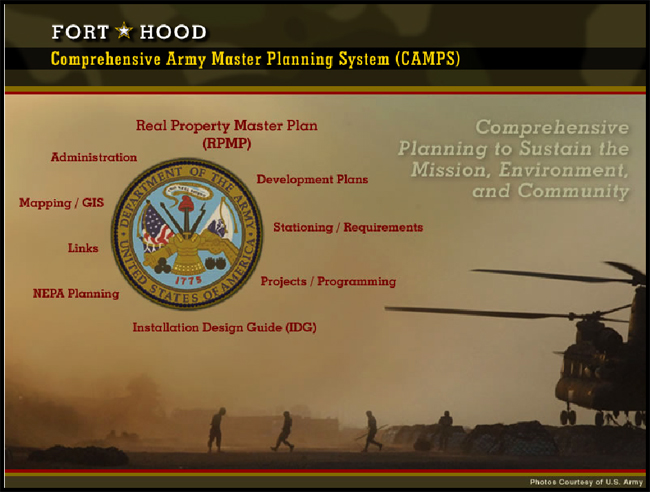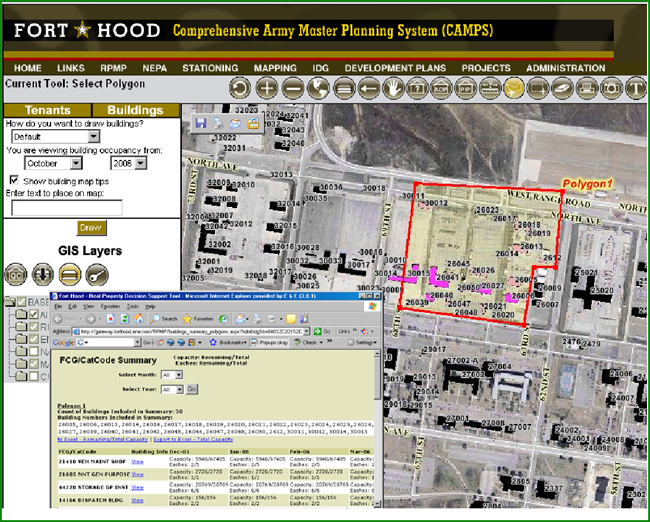
 Good planning is critical to achieving sustainability. The success of international, national, regional, and organizational plans for climate resiliency, energy management, supply chain optimization, facility management, and transportation efficiency depend on a defined purpose, need, and process to achieve sustainable performance.
Good planning is critical to achieving sustainability. The success of international, national, regional, and organizational plans for climate resiliency, energy management, supply chain optimization, facility management, and transportation efficiency depend on a defined purpose, need, and process to achieve sustainable performance.
Good planning is critical to achieving sustainability. The success of international, national, regional, and organizational plans for climate resiliency, energy management, supply chain optimization, facility management, and transportation efficiency depend on a defined purpose, need, and process to achieve sustainable performance.
Planning for sustainability in the USA has been primarily led by voluntary initiatives of state and local government, academia, corporations, and nonprofits. These groups have recognized the need to take action and combat climate change through reducing greenhouse gas (GHG) emissions. For example:
Sustainable planning is also being driven by regulatory compliance. For example:
So what does all of this have to do with GIS? Although a GIS-centric approach appears to be less integrated than might be expected, sustainable master planning and climate action, adaptation, and mitigation planning decision making all benefit from a more informed understanding of the spatial relationships of energy, water, and waste management, the supply chain, facilities, and transportation, and how they can be managed effectively to achieve an optimal result.
For example, at Fort Hood, the nation’s largest Army base with a population of over 200,000, the U.S. Army balances mission readiness, climate, and community using a sustainability-based master planning framework that leverages the latest in GIS and IT technology for both planning and operations.
 |
The base’s sustainability goals are set forth as follows:
A part of the master planning activities to achieve these goals, Fort Hood commissioned the development of a sustainable Installation Design Guide to guide green development on base over the next 20 years. Fort Hood also engaged Ecology and Environment, Inc to develop an interactive GIS-based Comprehensive Army Master Planning System known as “CAMPS” to optimize resource usage in a more sustainable manner.
 |
This system supports the application of standards and criteria for all maintenance, renovation, and new construction projects at the 339-square-mile installation. Specific standards and criteria cover building design, circulation, site planning, landscaping, site elements, and force protection. Sustainable design and development concepts are integrated into the standards and criteria for storm water management; water; energy; materials conservation; and the natural recruitment of vegetation in large, open-space areas.
CAMPS makes information readily accessible to support daily master planning and public works decisions. It provides cross departmental access to planning information and the enterprise level GIS and serves as a facility-management tool to track about 50,000 tenants and over 3,000 buildings on an ongoing basis. The GIS enables users to build, perform and save text-based and polygon definable graphical data queries, and map, report and export the results relating to general building information, building capacity, tenant occupancy based on based on dates and type of building needed. It enables the base to optimize building use and tenant allocation logistics. By doing so it enables Fort Hood to maximize the best use of existing infrastructure, minimize the need for new construction and optimize the consumption of supporting resources such as energy, water, wastewater and materials.
This example of GIS-integrated planning for sustainability undertaken by Fort Hood is likely to become much more prevalent going forward and not just within the military. GIS-based technologies provide clear value in support the decision making process for more sustainable strategic planning and for day to day operations. Furthermore, with more regulatory drivers and funding sources such as ARRA; the EPA proposed GHG ruling; American Clean Energy and Security Act of 2009 (ACES) and whatever results from the United Nations Climate Change Conference 2009 in Copenhagen this December we can expect more innovation in bringing these elements together to achieve better results.